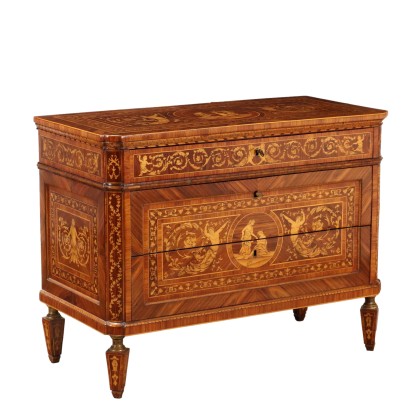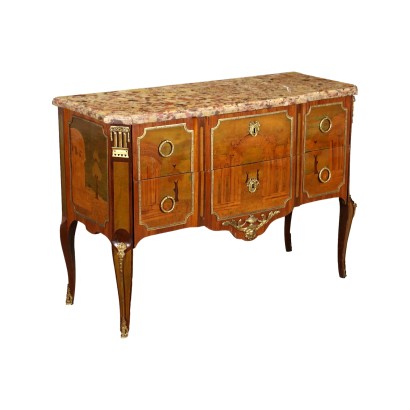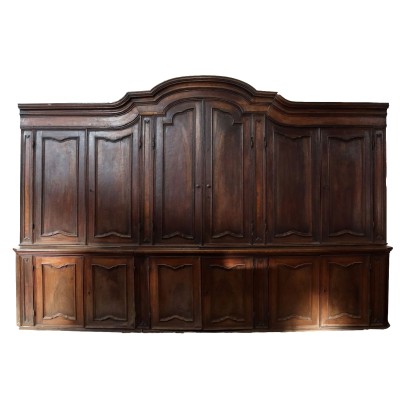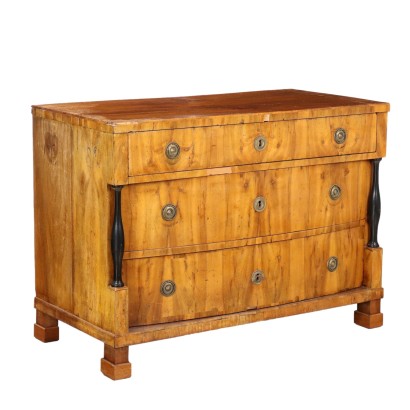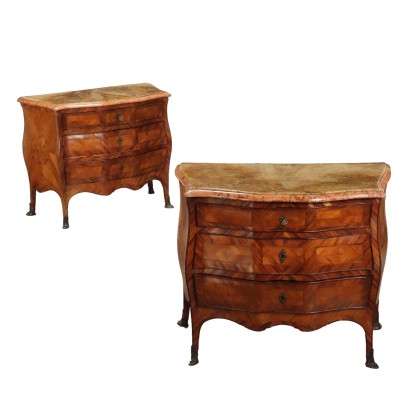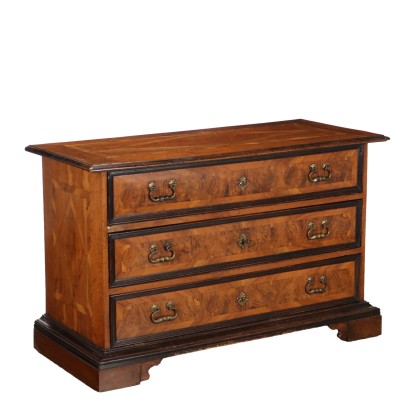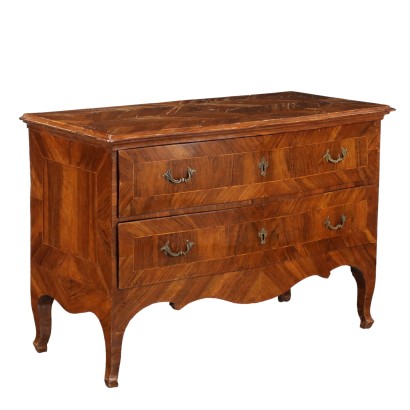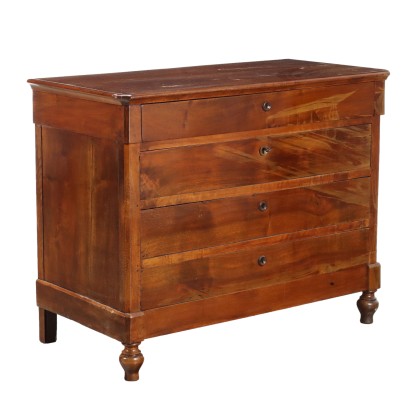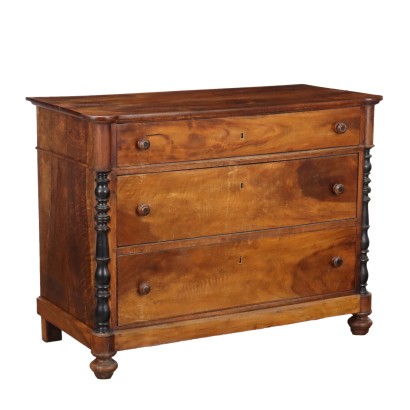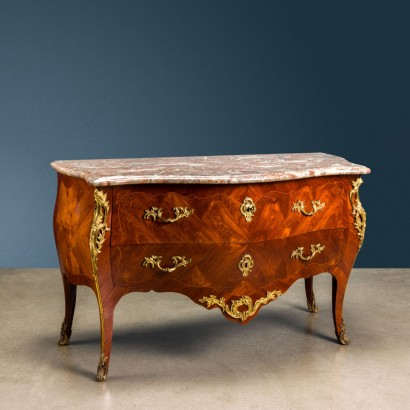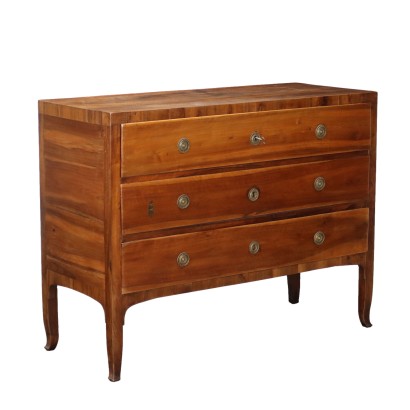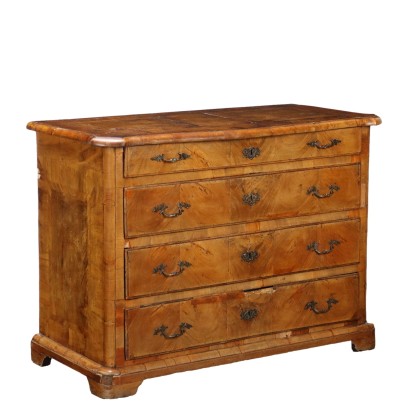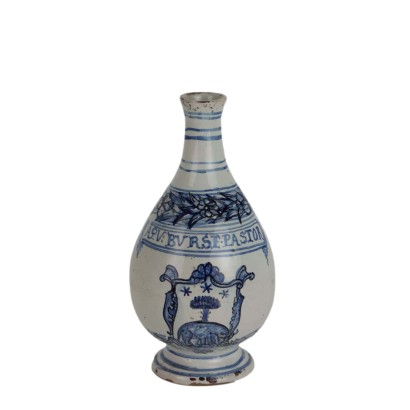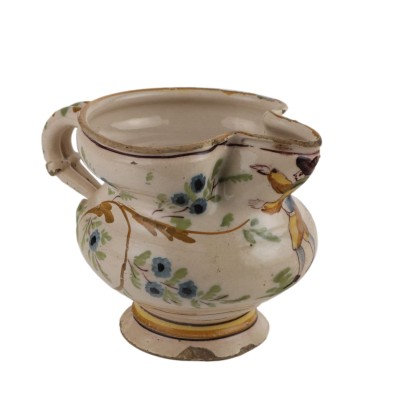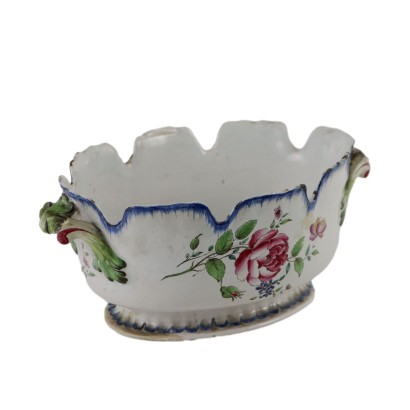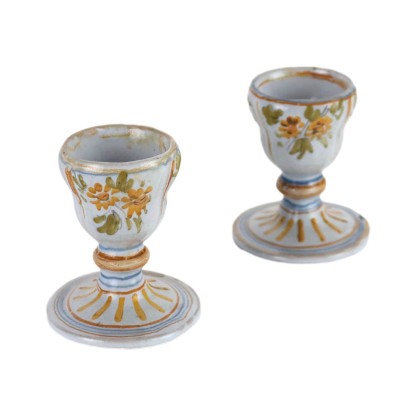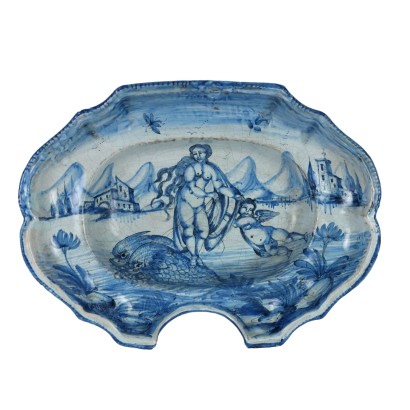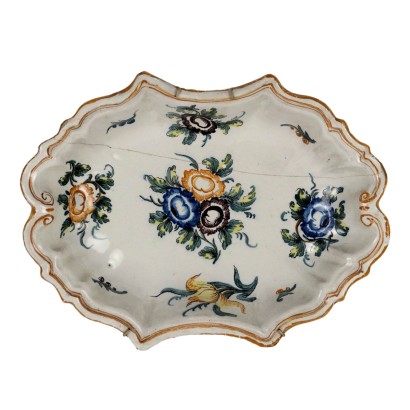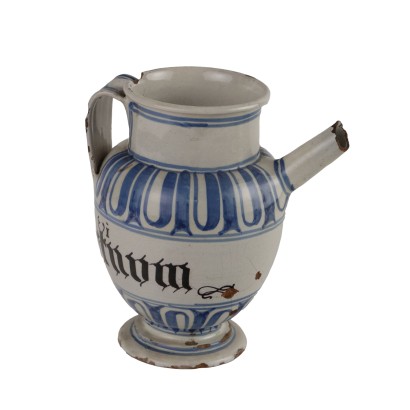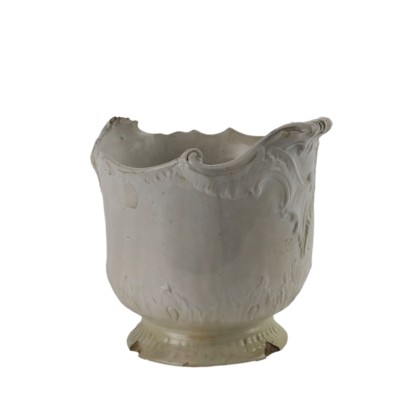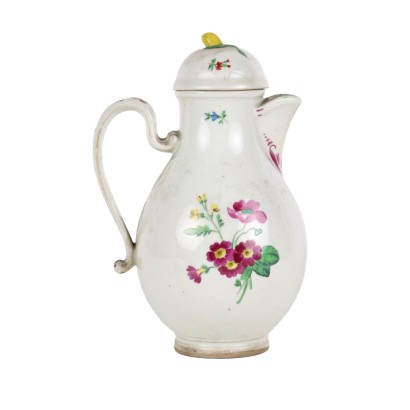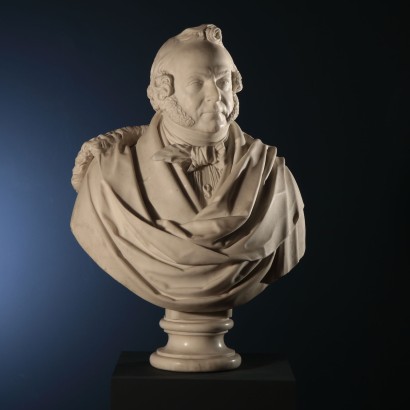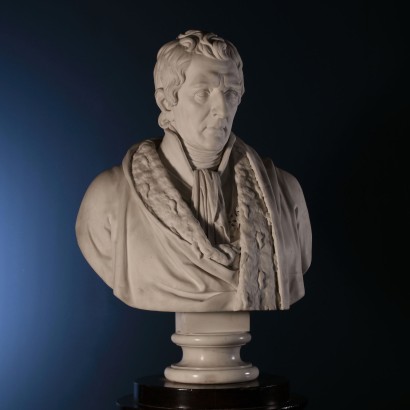Neoclassical Inlaid Chest of Drawers - Genoa Last Quarter XVIII Century
Features
Genoa Last Quarter XVIII Century
Age: 18th Century / 1701 - 1800
Origin: Genova, Liguria, Italy
Main essence: Walnut
Material: Maple Veneer , Tulipwood Slab
Description
Inlaid chest of drawers with three drawers, late 18th century Genoa. The piece of furniture has three drawers on the front, a narrower one under the top separated from the others by a raised frame and the other two with a hidden chain so as to create continuity of design; the uprights are semi-cylindrical and the piece of furniture rests on four truncated pyramidal feet with turned collar. The interiors are made of solid walnut, veneered mainly in bois de violette, divided into four parts on the bottom and at the top in the borders. The surface is richly inlaid with anthropomorphic figures with tails that become leafy spirals, both in the drawer under the band and on the top and front where medallion reserves contain inlaid epic scenes, on the sides a central female figure like a two-tailed mermaid develops from the sides two leafy spirals facing each other. The various leavening frames of the piece of furniture have cypress frames worked with a burin to imitate the inlay. Among the essences used are also boxwood, maple, olive and amaranth. The shape with cylindrical uprights and the use of bois de violette are typical of Genoese cabinetmaking. An interesting detail is added, in the Royal Palace of Genoa there is a console made by Giuseppe Maggiolini from which the idea of the inlays seems to have derived. It should also be underlined that the piece of furniture presents clear assonances with a production of chests of drawers that can be included today in the corpus known as Dardanone. Ferdinando Dardanone, probably both a cabinetmaker and a merchant based in Milan, signs some chests of drawers today known to the studies whose comparison with other furniture is helping to resolve the correct attributions. In this regard we report in the bibliography some articles.
Product Condition:
Furniture in good condition, shows small signs of wear. We try to present the real condition of the furniture as completely as possible with the photos. If some details are not clear from the photos, what is reported in the description is valid.
Dimensions (cm):
Height: 90
Width: 117
Depth: 57
Additional Information
Notes historical bibliographic
- Giuseppe Beretti, Giuseppe Maggiolini, the Workshop of Neoclassicism, ed. Malavasi 1994 - Enrico Colle, Neoclassical Furniture in Italy, ed. Electa 2005 - https://www.antiquanuovaserie.it/cassettoni-neoclassici-lombardi-con-lesena-a-cornucopia/ - https://www.cristinacorsi.it/post/una-commode-neoclassica-milanese-in-asta-wannenesAge: 18th Century / 1701 - 1800
18th Century / 1701 - 1800Main essence: Walnut
Walnut wood comes from the plant whose botanical name is juglans regia , probably originally from the East but very common in Europe. Light or dark brown in color, it is a hard wood with a beautiful grain, widely used in antique furniture. It was the main essence in Italy throughout the Renaissance and later had a good diffusion in Europe, especially in England, until the advent of mahogany. It was used for solid wood furniture and sometimes carvings and inlays, its only big limitation is that it suffers a lot from woodworm. In France it was widely used more than anything else in the provinces. In the second half of the eighteenth century its use decreased significantly because mahogany and other exotic woods were preferred.Material:
Maple Veneer
Tulipwood Slab
Other customers have searched:
Cassettiera, cassettone, settimanale, mobile da camera, commode, canterano, comò..
Approfondimenti
Scopri di più su cassettiere e comò grazie ai nostri approfondimenti:
La storia nascosta in due antichi cassettoni
Conoscere il Neoclassicismo attraverso un cassettone piacentino
Un comò piemontese influenzato dal fascino per l'Oriente
Un signorile comò rococò napoletano
Una caratteristica cassettiera con alzata emiliana di perfetto gusto barocchetto
E per gli appassionati dal gusto più raffinato, c'è FineArt:
Commode a tre cassetti G.B.M., inizio XIX secolo
Canterano dipinto
Canterano emiliano, primo quarto XVIII
Cassettone a ribalta romano, secondo quarto XVIII secolo
Comò attribuito a Luigi Viglione, Luigi XVI, fine XVIII, Torino
Coppia di comò e comodino di Maggiolini
Sull'antiquariato in generale dai un'occhiata anche a
Classic Monday: da un pezzo dei nostri magazzini alla storia dell'antiquariato
L'antiquariato dalla A alla Z: il Dizionario dell'Antiquariato
Il dizionario dell'antiquariato - Lastronatura
Il dizionario dell'antiquariato - Mascherone
Il dizionario dell'antiquariato - Natura morta
Il dizionario dell'antiquariato - Opificio
Il dizionario dell'antiquariato - Pastiglia
Il dizionario dell'antiquariato - Savonarola
Il dizionario dell'antiquariato - Rosone
Approfondimenti
Scopri di più su cassettiere e comò grazie ai nostri approfondimenti:La storia nascosta in due antichi cassettoni
Conoscere il Neoclassicismo attraverso un cassettone piacentino
Un comò piemontese influenzato dal fascino per l'Oriente
Un signorile comò rococò napoletano
Una caratteristica cassettiera con alzata emiliana di perfetto gusto barocchetto
E per gli appassionati dal gusto più raffinato, c'è FineArt:
Commode a tre cassetti G.B.M., inizio XIX secolo
Canterano dipinto
Canterano emiliano, primo quarto XVIII
Cassettone a ribalta romano, secondo quarto XVIII secolo
Comò attribuito a Luigi Viglione, Luigi XVI, fine XVIII, Torino
Coppia di comò e comodino di Maggiolini
Sull'antiquariato in generale dai un'occhiata anche a
Classic Monday: da un pezzo dei nostri magazzini alla storia dell'antiquariato
L'antiquariato dalla A alla Z: il Dizionario dell'Antiquariato
Il dizionario dell'antiquariato - Lastronatura
Il dizionario dell'antiquariato - Mascherone
Il dizionario dell'antiquariato - Natura morta
Il dizionario dell'antiquariato - Opificio
Il dizionario dell'antiquariato - Pastiglia
Il dizionario dell'antiquariato - Savonarola
Il dizionario dell'antiquariato - Rosone
Product availability
The product can be seen at Cambiago
Immediate availability
Ready for delivery within 2 working days from ordering the product.



